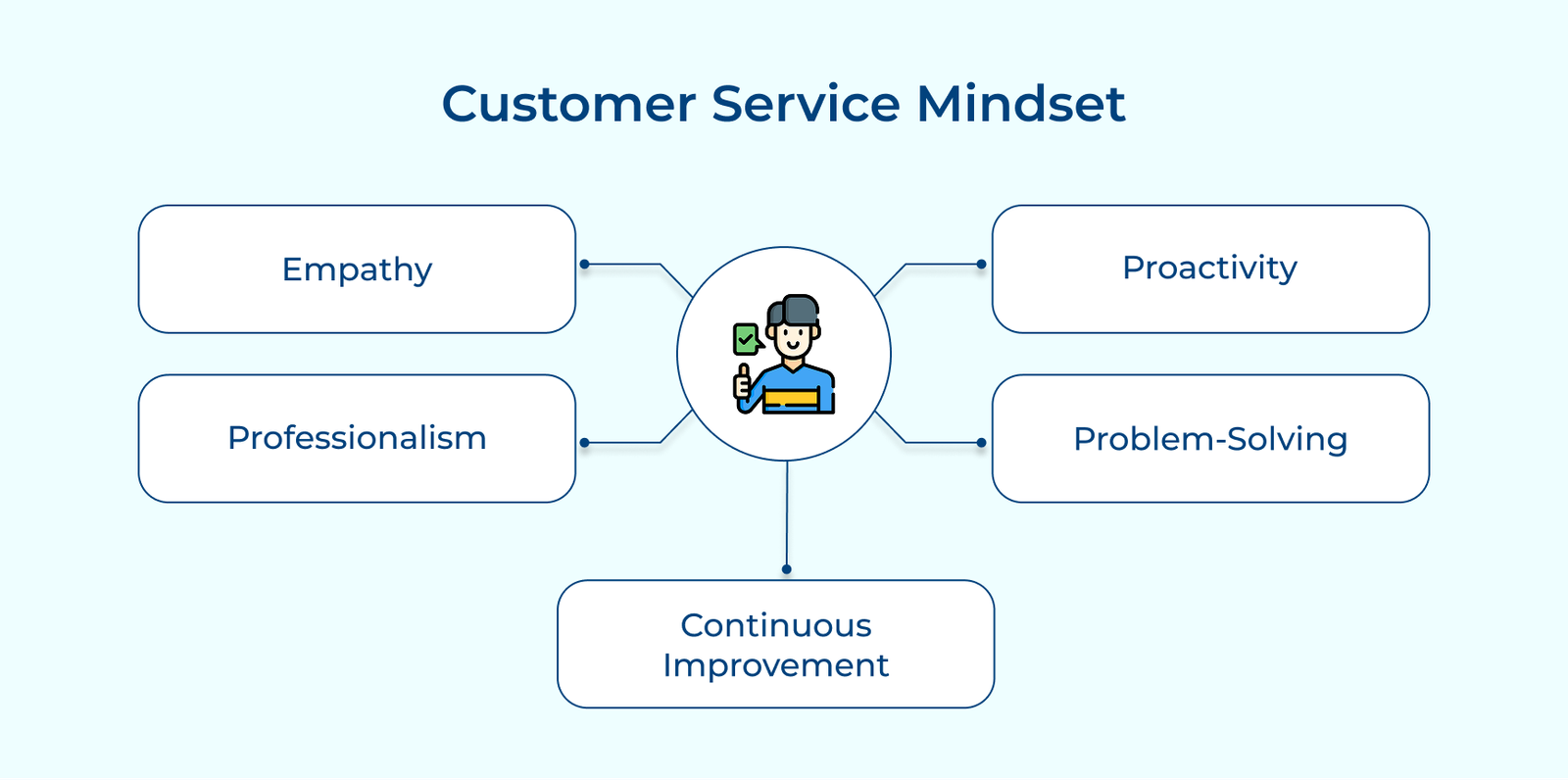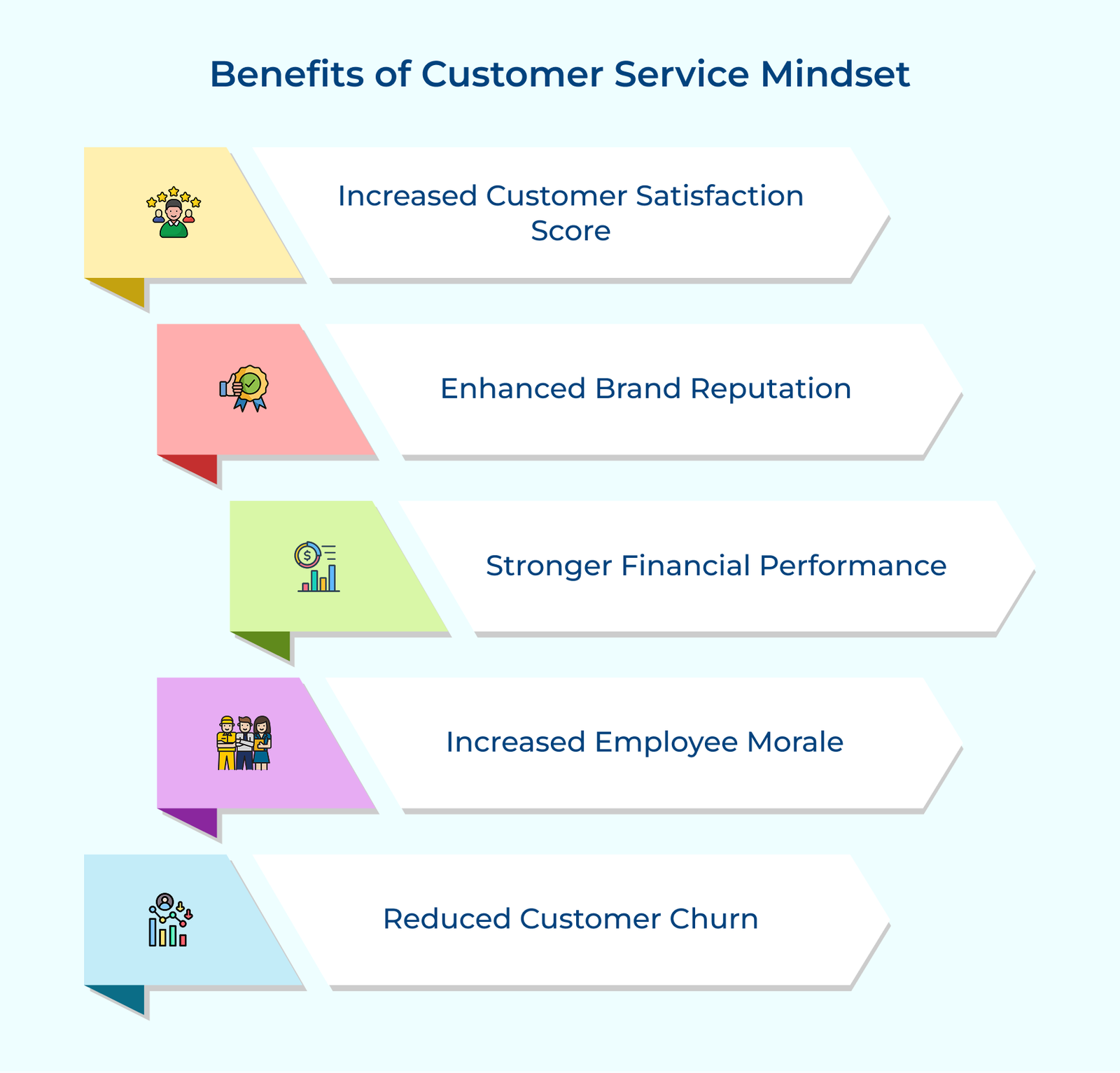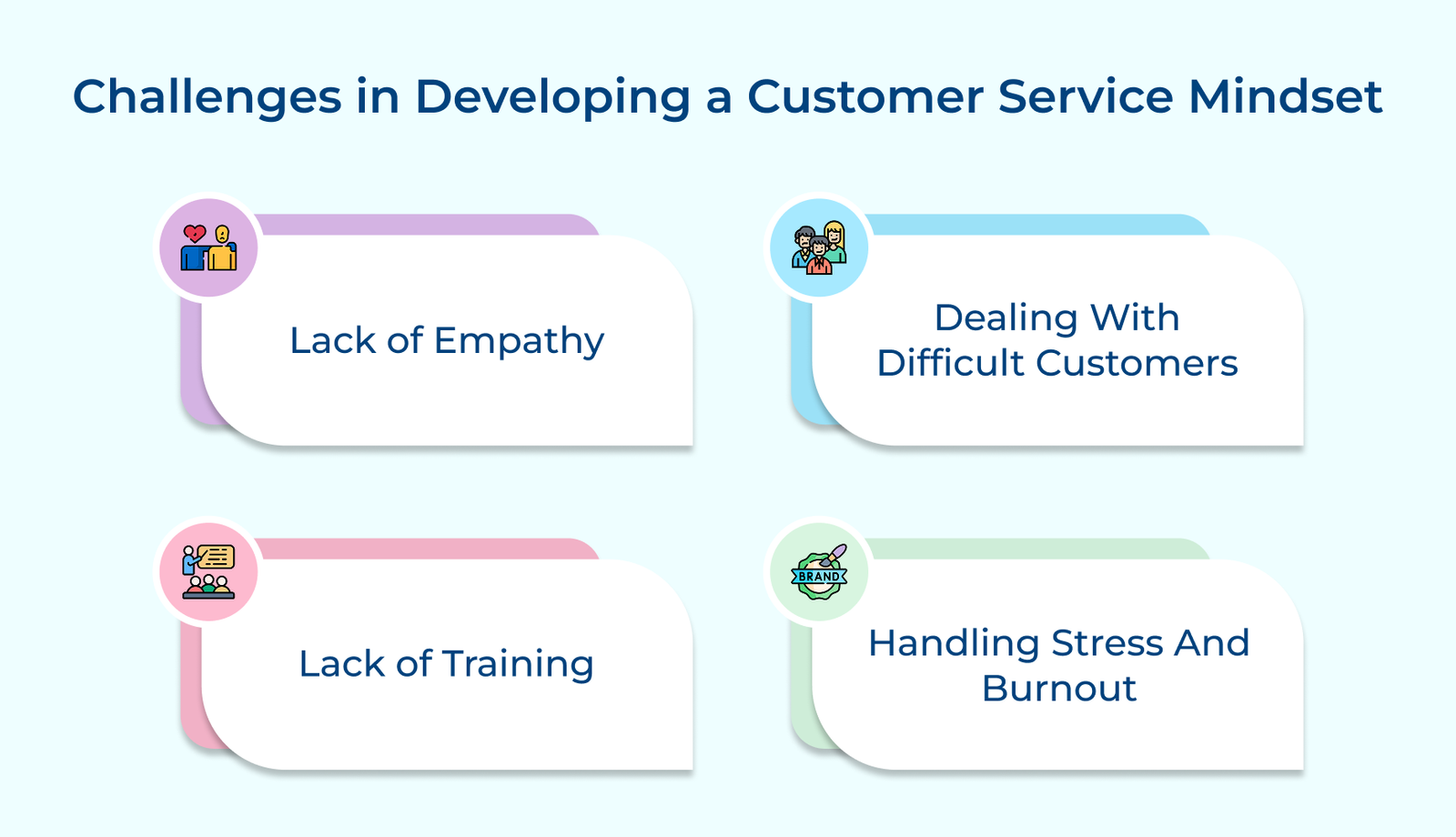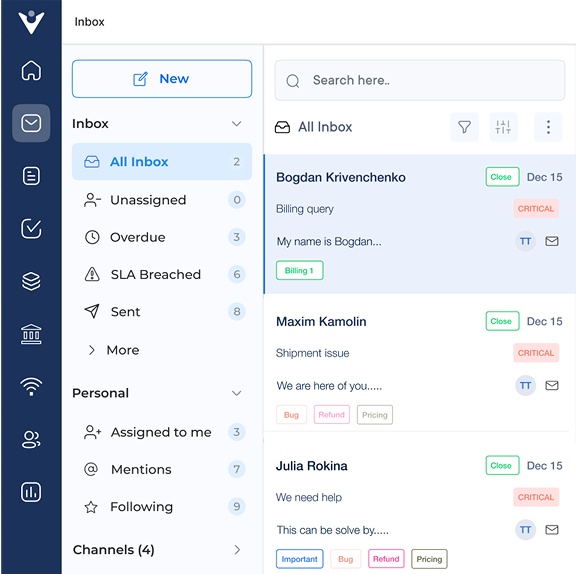1. Leading by Example
Leading by example is pivotal in building a customer service mindset within an organization. The role of leadership in setting the tone cannot be overstated. Leaders who genuinely embody customer-centric values and prioritize customer satisfaction create a ripple effect that permeates throughout the organization. Effective leaders understand that enhancing a culture of excellence in customer service begins at the top.
A powerful use case for leading by example is when a CEO or senior executive personally handles a customer complaint, demonstrating the importance of customer satisfaction. It sets the standard for how customer interactions should be handled.
How to implement:
- Actively participate in customer-facing activities: Leaders should regularly interact with customers, attend customer meetings and experience the company’s offerings firsthand. The hands-on approach reinforces the importance of customer-centricity.
- Encourage open communication and feedback loops: Leaders should actively seek insights from frontline employees and customers. The approach enhances an environment where feedback is welcomed and acted upon to improve processes.
2. Implementing Customer Feedback Continuously
Implementing customer feedback continuously is essential for building a customer support mindset. The step involves gathering customer feedback through various channels, such as surveys, social media, customer support interactions and in-person conversations. Analyzing the collected feedback is crucial for identifying recurring themes, pain points and growth opportunities.
Once areas for improvement have been identified, organizations should implement changes based on customer feedback. It could involve updating processes, revising policies, or introducing new initiatives to address customer concerns and meet their evolving needs.
Key benefits:
- Improved customer satisfaction: Addressing customer feedback directly contributes to increased customer satisfaction and loyalty.
- Continuous improvement: Implementing customer feedback becomes a continuous cycle of improvement. It ensures that the organization remains agile and responsive to changing customer needs.
3. Training Employees
Training employees is a critical component of building a customer mindset within an organization. A client service mindset refers to a company-wide commitment to prioritizing customer needs and delivering exceptional experiences. The purpose of training is to equip employees with the knowledge necessary to consistently exceed customer expectations.
A powerful use case for employee training is the implementation of role-playing exercises. Employees can practice their customer service skills in a controlled environment, receiving feedback and guidance to improve their approach by simulating real-life customer interactions.
How to implement:
- Onboarding and continuous training: Incorporate customer service training from the onboarding stage and provide development opportunities to reinforce the mindset.
- Leverage technology: Utilize e-learning modules, simulations and virtual reality experiences to enhance the training experience.
4. Personalized Customer Interactions
Personalized customer interactions refer to tailoring the customer service experience to each individual’s preferences and needs. 71% of buyers want companies to deliver personalized customer interactions. The purpose is to create a positive and memorable experience, enhancing customer loyalty. Understanding customer preferences and needs is crucial.
The process involves gathering data through surveys and analyzing customer interactions to identify their communication styles. A common use case is in e-commerce, where personalized recommendations, tailored marketing campaigns and customized support can significantly enhance the customer journey.
Pro tips:
- Leverage customer data: Utilize customer information, purchase history and browsing patterns to provide personalized recommendations.
- Omnichannel approach: Offer consistent and seamless customer experiences across multiple channels (email, chat, phone, social media) based on customer preferences.
- Intelligent automation: Implement chatbots that can provide personalized responses based on customer data and machine learning algorithms.
5. Emphasizing Empathy for Customer Issues
Empathy involves understanding the customer’s perspective, emotions and concerns, and responding with genuine care. Displaying empathy means actively listening to the customer, acknowledging their feelings and validating their experiences. Empathetic language, such as “I understand how frustrating this must be for you,” can go a long way in making the customer feel heard and valued.
Let’s assume that if a customer expresses frustration over a delayed shipment, an empathetic response might be, “I understand how disappointing the delay must be for you. Please know that we value your business and resolving the issue is our top priority. Let me explore alternative shipping options to get your order to you as soon as possible.”
Key benefits:
- Improved customer satisfaction, as customers feel heard, understood and valued, enhancing stronger relationships with the brand.
- Enhanced brand reputation as empathetic interactions create positive word-of-mouth and a caring brand image.
6. Implementing Seamless Omnichannel Support
Implementing seamless omnichannel support is a critical component of building a customer support mindset that prioritizes convenience, consistency and a superior customer experience. The approach ensures that customers receive a unified experience across all channels, including phone, email, chat, social media and in-person interactions.
Let’s consider that a customer initiates a chat session to inquire about a product but needs to leave. They can continue the conversation via email or phone, with the representative having full access to the previous interactions, ensuring a personalized resolution.
Best practices:
- Adopting a centralized customer relationship management (CRM) system to maintain a comprehensive customer profile and interaction history, accessible across all channels.
- Ensuring consistent branding, tone, messaging and level of service across all channels to reinforce a cohesive brand experience.
- Providing regular training, tools and resources to customer service representatives, enabling them to utilize multiple channels while delivering personalized support.
7. Taking a Customer-Centric Approach to Problem-Solving
The approach involves putting the customer at the forefront of decision-making and ensuring that their needs are prioritized throughout the problem-solving process. Prioritizing customer needs in decision-making involves gathering comprehensive customer insights, analyzing feedback and understanding their pain points.
Involving customers in the problem-solving process is another critical aspect of the approach. Actively engaging with customers can help organizations gain valuable first-hand perspectives on issues and collaborate with them to develop effective solutions. The collaborative approach enhances trust, transparency and a sense of ownership among customers.
Pro tips:
- Establish robust customer feedback mechanisms: Implement various channels for customers to provide input, suggestions and feedback, ensuring their voices are heard.
- Celebrate customer-driven improvements: Recognize and celebrate instances where customer feedback have led to successful problem-solving. It helps in reinforcing the importance of a customer-centric mindset.
4 Customer Support Mindset Examples
Get inspired by the four real-world customer service mindset examples of organizations that have cultivated a positive and customer-centric mindset.
















